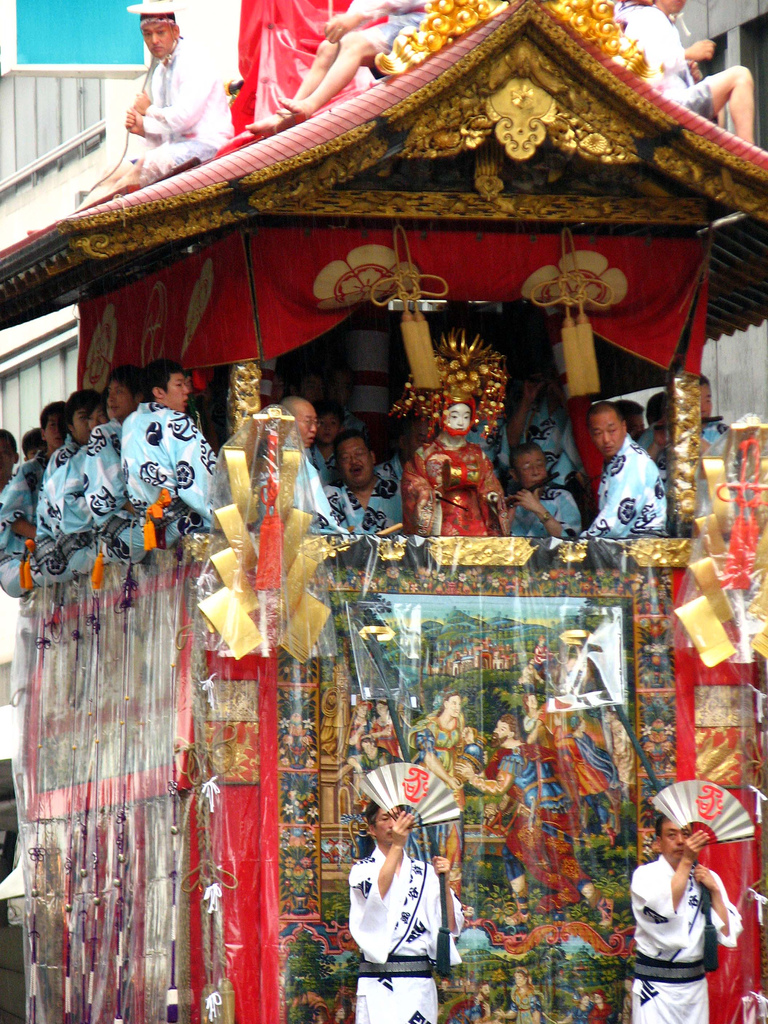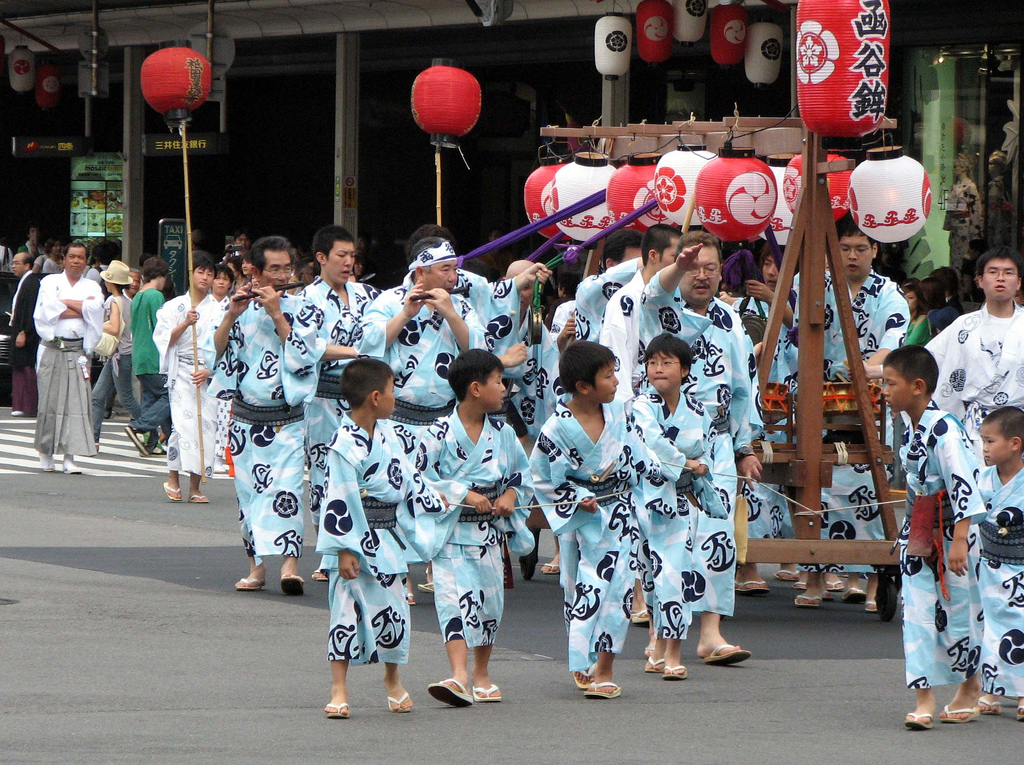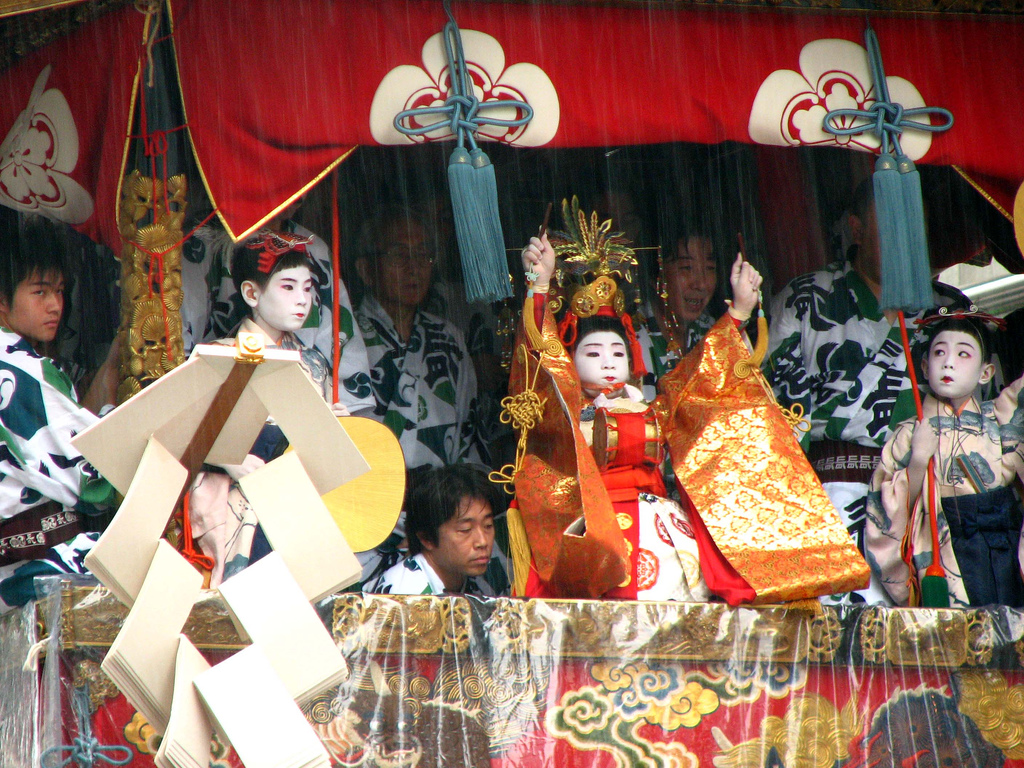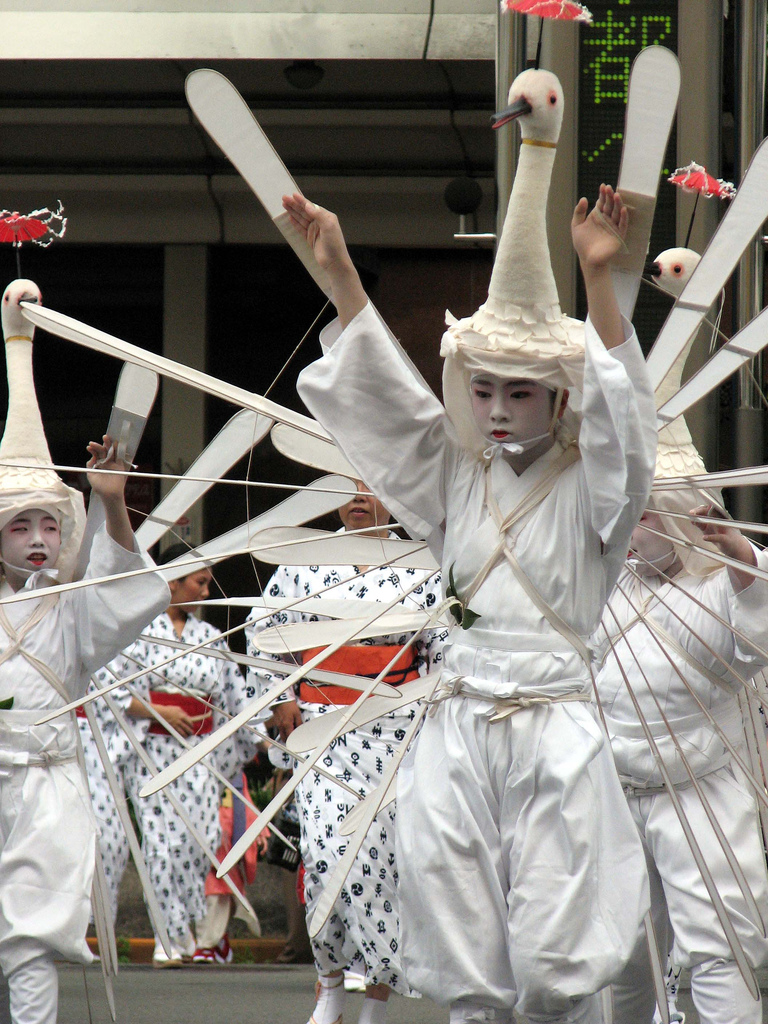
Kanko Boko (函谷鉾) Gion Matsuri Parade
The highlight of the Gion Matsuri is the procession of elaborate floats that takes place every year of July 17. This originally began in 869 when a priest from Yasaka Jinja led a procession through the streets of Kyoto to try to rid the city of the plague that was rampant at the time. Today it is one of the major festivals in Japan, drawing tens of thousands of tourists.

Procession from Yasaka, Gion Matsuri Parade (Yamaboko Junko)
The parade consists of 32 floats which are elaborately decorated in fabric and gold ornaments. The detailing is incredible, and they are often referred to as portable museums. Earlier in the month, the floats are assembled without nails, held together in the traditional fashion with rope. The floats are massive assemblages on wheels, pulled by dozens of citizens in traditional summer clothing. The lower level of the float has men shouting orders to the bearers, and the upper level has children playing musical instruments. Some of the floats have dolls on the upper level. Each float is so large it requires special techniques to turn, with rods placed under the wheels.

Naginataboko (長刀鉾) Chigo, Gion Matsuri Parade (Yamaboko Junko)
There are some reserved seats, or you can pick a place anywhere along the parade route to watch. The floats move slowly, but the music and dancing keep the mood festive, and there is plenty of time to enjoy the ornaments on them. It is an interesting and memorable event destined to be a highlight of your visit.

Heron girls on parade, Gion Matsuri Parade (Yamaboko Junko)
Crowds are dense, so plan to arrive early for a good view. The parade leaves the corner of Karasuma-dori and Shijo-dori between 9 – 11 am and heads along Shijo-dori. It turns left onto Kawaramachi-dori around 9:40 – 11:40 am, then from Kawaramachi-dori to Oike –dori around 10:30 – 12:30. The parade ends at Shinmachi-dori.
 photos by:
MShades &
MShades,
MShades,
MShades
photos by:
MShades &
MShades,
MShades,
MShades